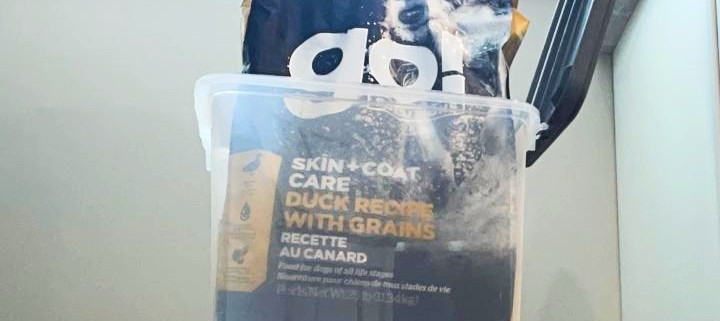Pet Food Storage: Could Dry Pet Food Be Making Your Pet Sick?
Feeding your pet dry food is convenient. You don’t have to worry about any special handling requirements or finding extra space in your refrigerator or freezer. However, that convenience can come with a price that can harm your pet.
Our Top Four Tips for Safely Storing Your Pet’s Dry Food.
1) Keep your pet food in the original package.
Pet food bags are designed to keep the food as fresh as possible. After opening, fold over the top of the bag to press as much air out as possible. If you’d like to use a storage container, put the whole bag inside the container, but do not dump the kibble out of the bag.
Why?
Dry pet food formulations include necessary animal fats, which start to go rancid once exposed to oxygen (right after manufacturing, even inside the sealed bag). These fats coat the inside of storage containers and continue to oxidize over time and interact with compounds of the storage container itself (metal, plastic, etc.), which then contaminates the fresh kibble you just poured in. In fact, improper storage of kibble is a large reason for food-related illness in pets.
2) Keep your pet food in a cool, dry place.
To prolong freshness and maximize nutritional value, keep your pet food in the same places that you store your own food: away from sunlight, heat, and moisture.
Why?
Moisture and food can be a fatal combination. Humid and warm areas create a perfect environment for mold and harmful bacteria to thrive. The worst of these bacteria, called aflatoxins, can cause severe liver damage and even lead to life-threatening emergencies. Learn more about how to properly store your pet’s dry food here.
3) Purchase a bag of food that will last your pet for roughly one month.
For optimal nutrition, freshness and palatability, we recommend buying the smallest bag of food that is appropriate for your pet – about 30 days’ worth. A small bag (4 – 5 lbs) is appropriate for a small dog, and a large bag (20+ lbs) for a large dog.
Why?
When pet food is stored for a long period of time, opened or not, the risk of rancid fats, mycotoxin contamination, pathogenic bacteria, and storage mites are significant risk factors. We often hear pet parents state that their pet gets bored by the end of the bag, but if that bag is 2+ months old, it’s likely that your pet can smell that the food has spoiled. In fact, one of the largest reasons pets turn their nose up to food midway through the bag is because it has turned rancid. Here are more considerations for bulk buying pet food.
Our team is always happy to discuss these topics on an individual basis. If you have questions regarding the storage of your pet’s food, please see one of our pet nutrition experts in-store.






